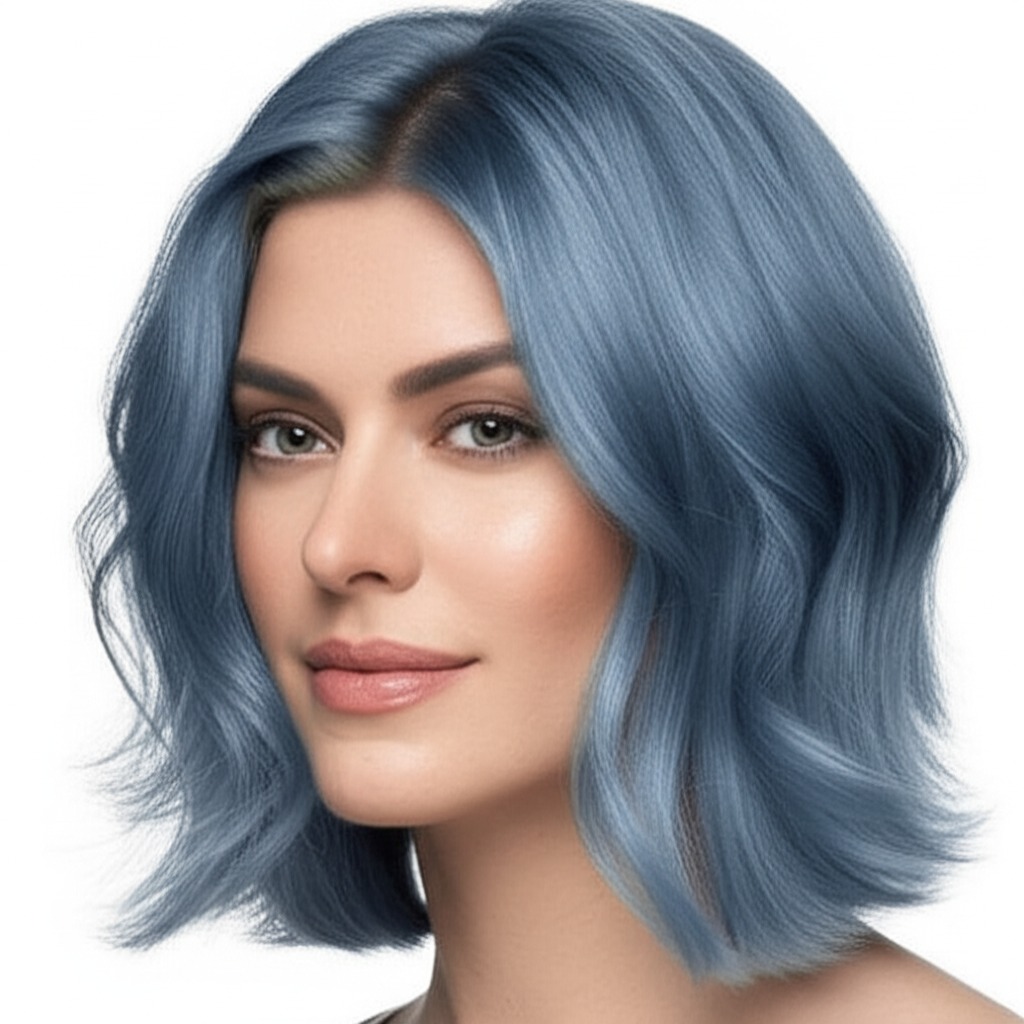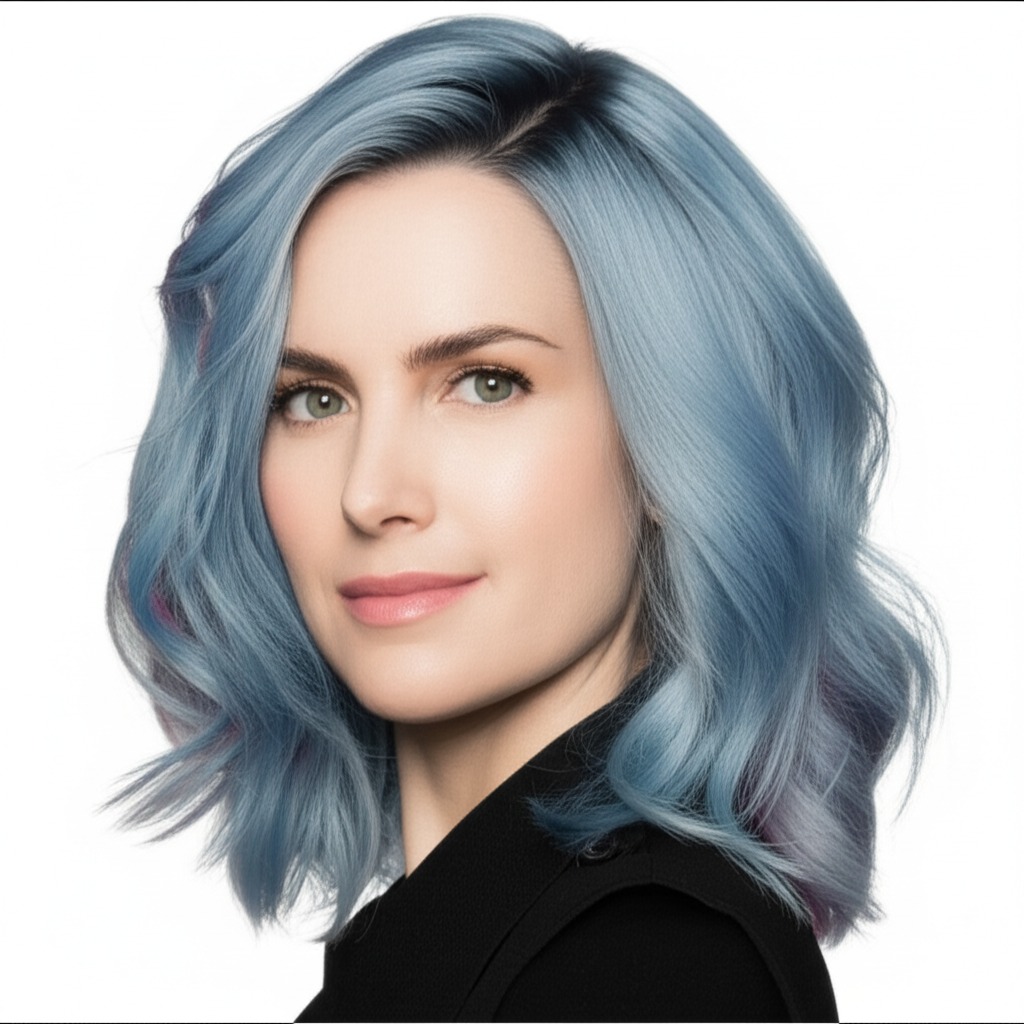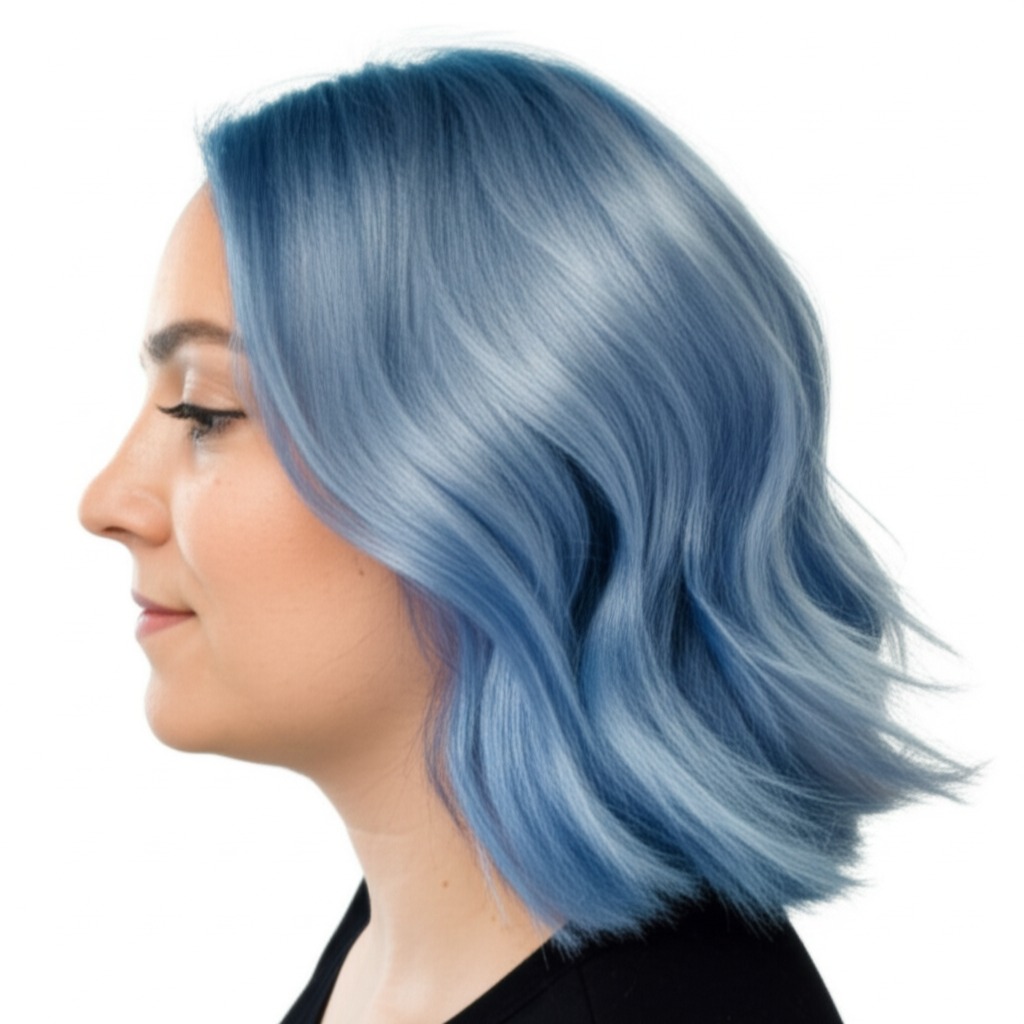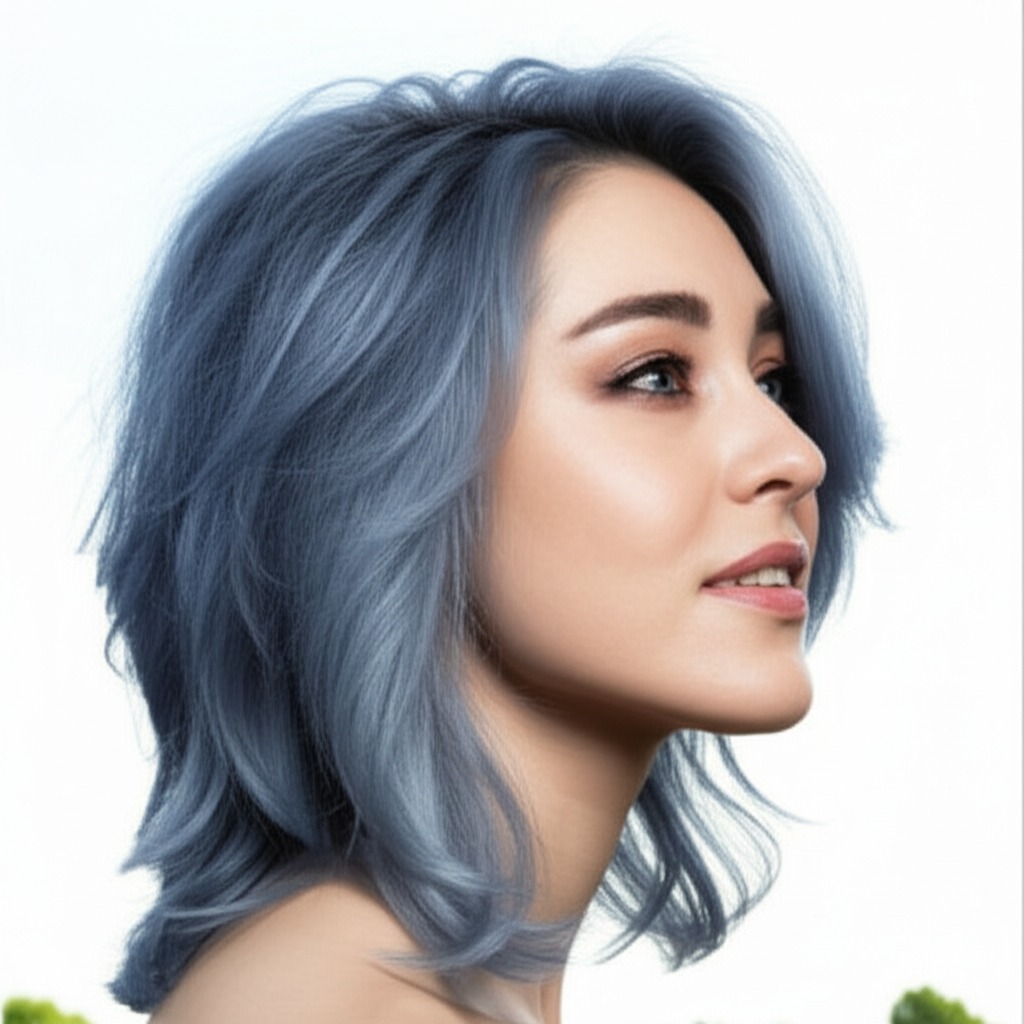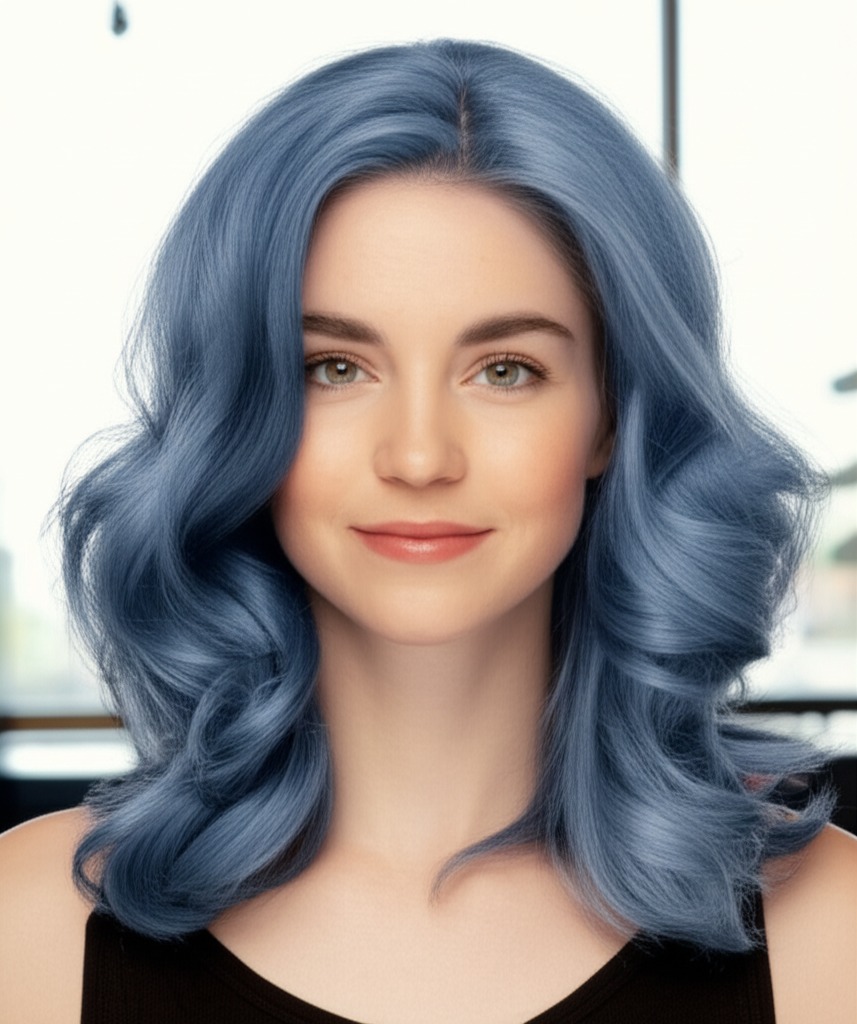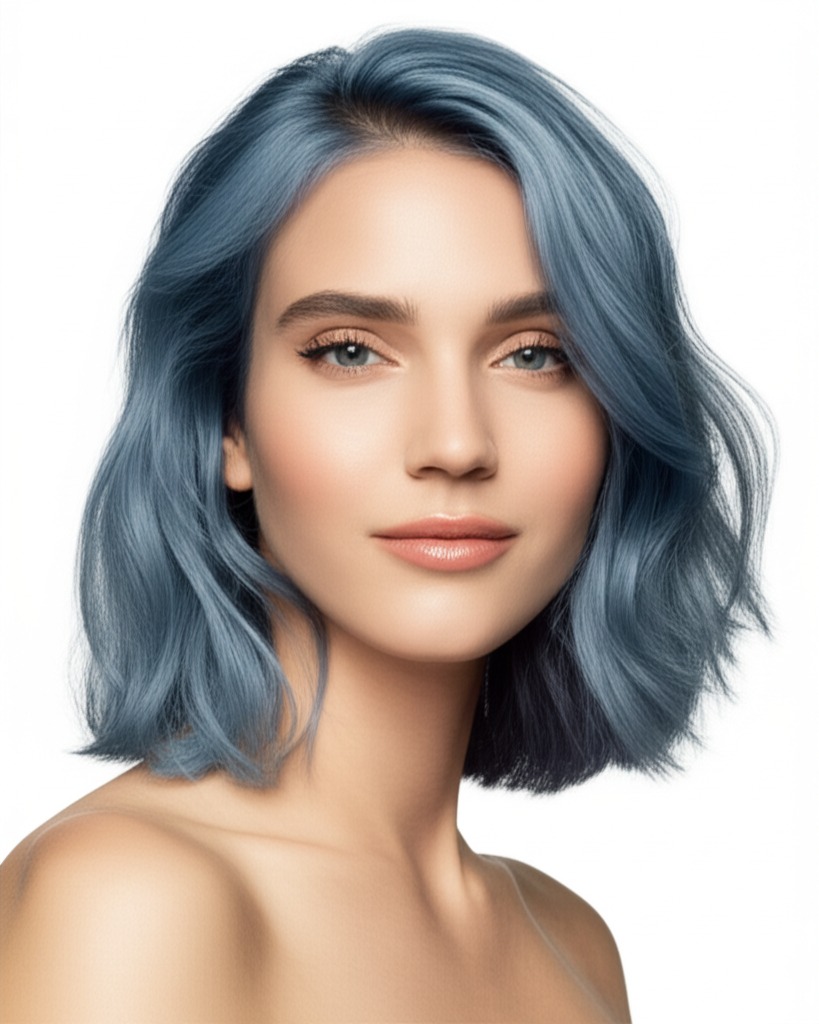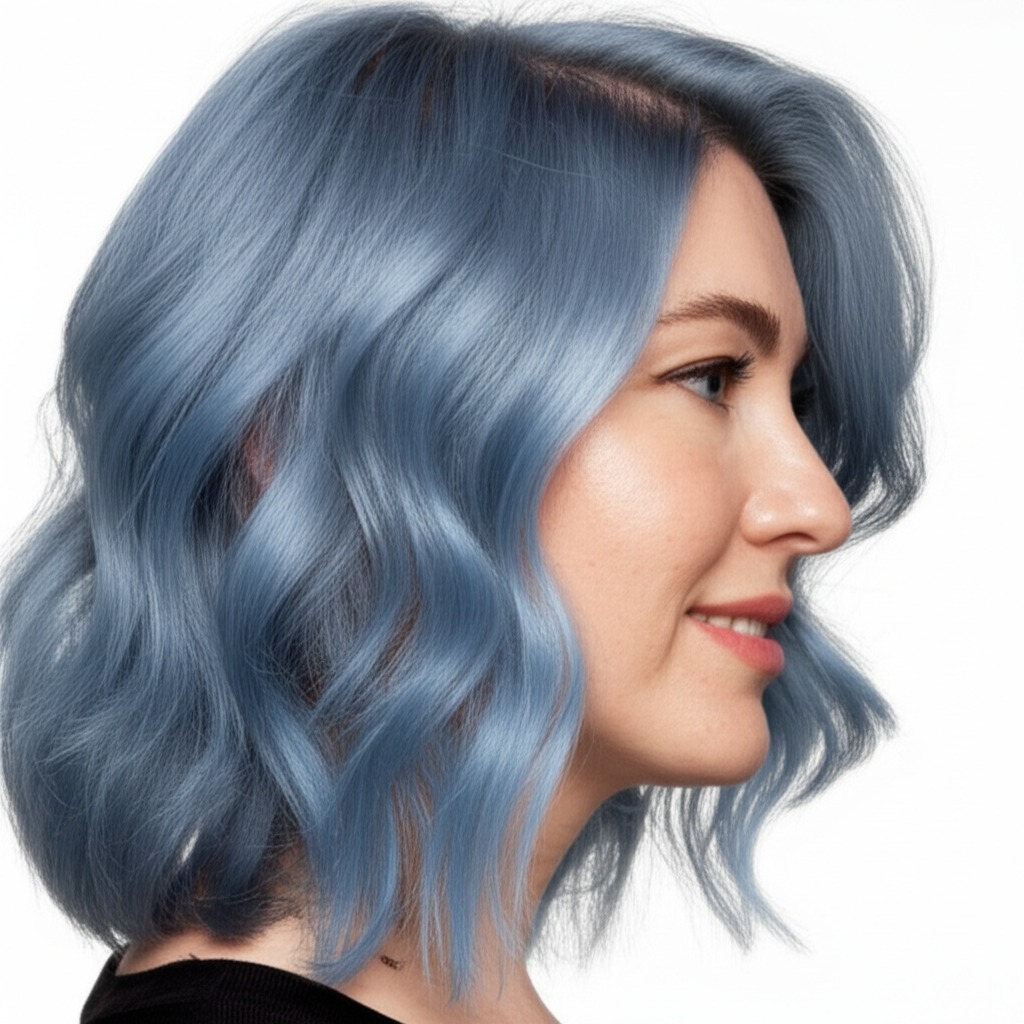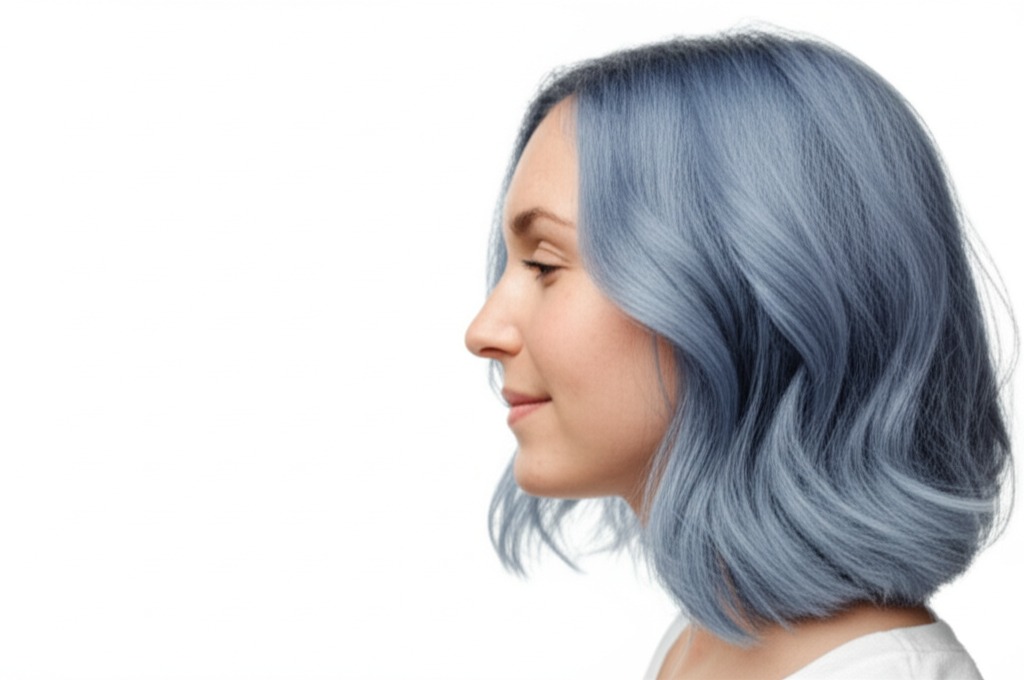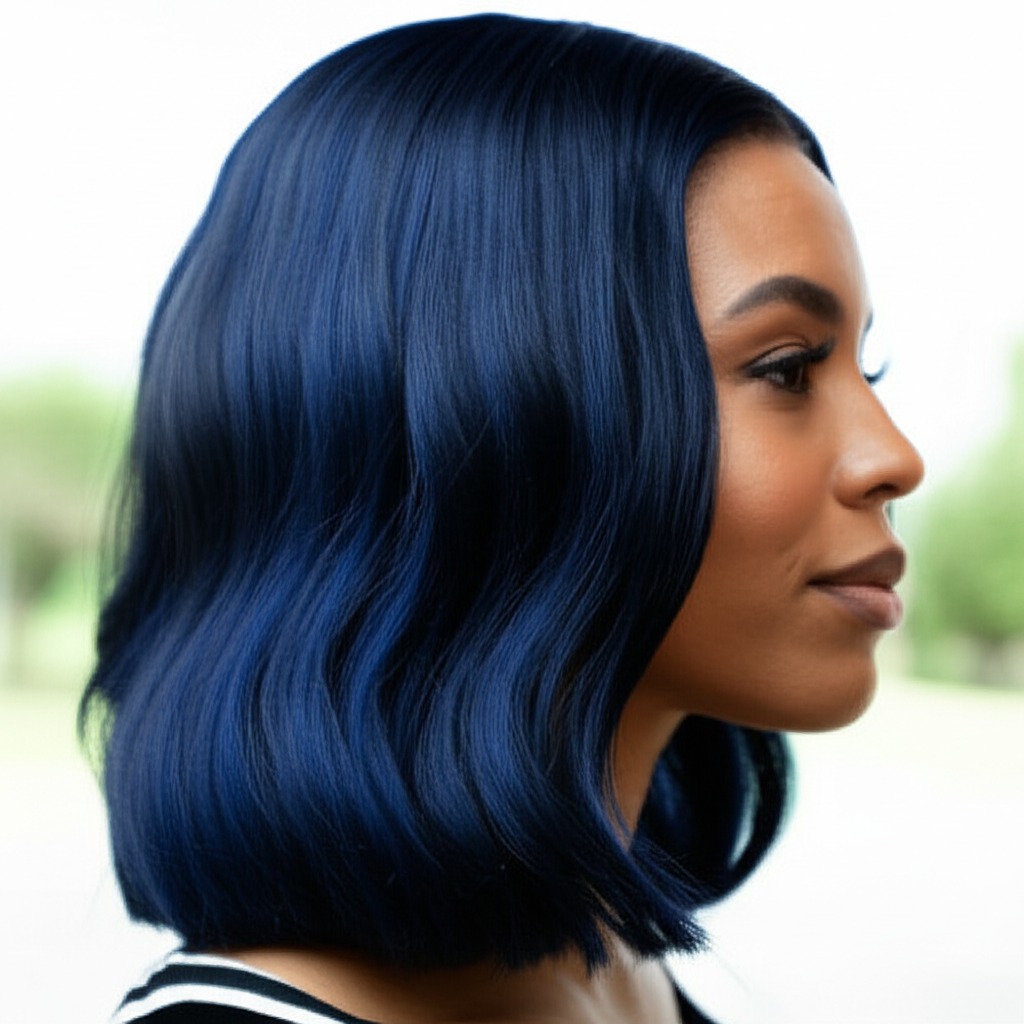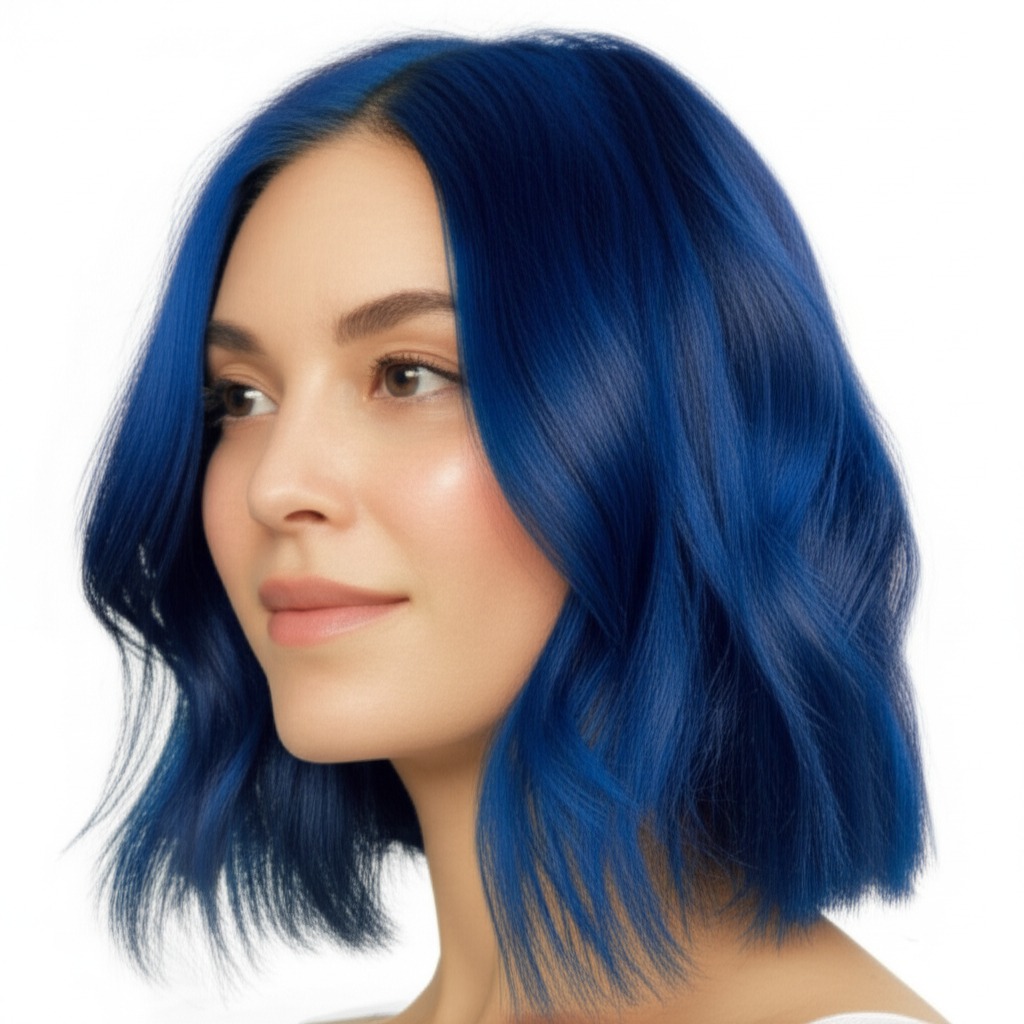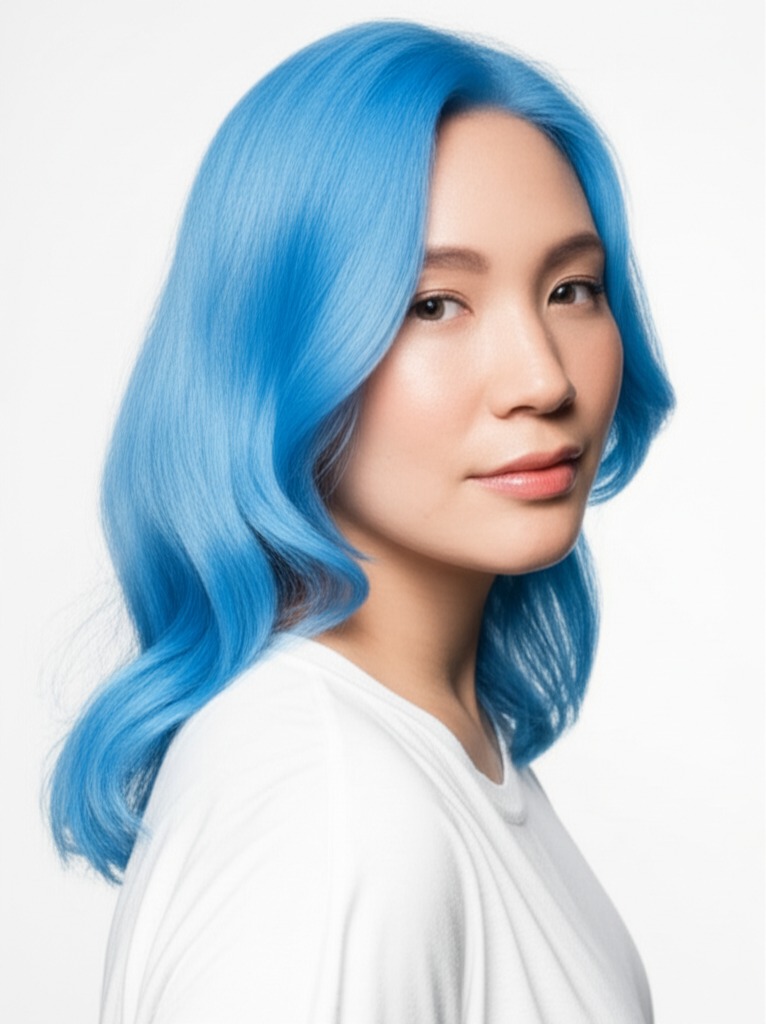#Dive into Steel Blue Hair Color: A Comprehensive Guide
Steel blue is a captivating hair color—think of the deep, shimmering hue of a stormy sky just before sunset. It's more than just "blue;" it’s complex and can be incredibly flattering when done right. This guide breaks down everything you need to know about achieving and maintaining this beautiful shade.
#1. Understanding Steel Blue: Shade Definition
Steel blue isn't simply one color; it exists on a spectrum. Here’s what defines it:
- Undertone: Primarily cool. This is crucial! True steel blue leans towards cool blues, grays, and hints of silver. It avoids any warmth (red or orange). A warmer steel blue can look muddy or teal-ish – not the desired effect.
- Depth (Levels): Steel blue works best on darker hair to start with. Think Levels 4-7 on the hair level scale (1 being black, 10 being lightest blonde). The deeper your starting point, the richer and more dimensional the steel blue will appear. Lighter levels require significant pre-pigmentation (explained later in “Common Pitfalls”) which adds complexity and cost.
- Variations: You’ll see variations like "icy steel blue" (more silver), "navy steel blue" (deeper, almost indigo), or "dusty steel blue" (softer, more muted). Discuss your desired intensity with your stylist.
#2. Who Does Steel Blue Flatter?
Choosing a hair color is about harmony! Here's how to see if steel blue will work for you:
- Skin Tone & Undertone:
- Best Suited For: Cool skin tones (pink, red, or bluish undertones). Think fair porcelain skin with pink cheeks, olive skin with cool undertones, or deeper skin tones that lean towards a cooler cast.
- Less Ideal For: Warm skin tones (golden, yellow, or peach undertones). Steel blue can make warm complexions look sallow or washed out. However, skilled stylists can sometimes adapt the shade for warmer skin by adding subtle violet or gray nuances to soften it and prevent clashing.
- Eye Colors: This color really makes certain eye colors pop!
- Stunning with: Blue, grey, green (especially hazel), and even brown eyes can look incredible against steel blue. The contrast creates a striking visual effect.
- Natural Level Starting Points: As mentioned earlier, Levels 4-7 are ideal. Starting darker allows for richer color payoff and less damage from lightening processes.
#3. Technique Options: Achieving the Look
How you apply steel blue significantly impacts the final result:
- Single Process: This is a full, even application of color. Best suited for those with all-over dark hair who want a bold statement.
- Highlights/Lowlights: Adding subtle highlights (lighter pieces) or lowlights (darker pieces) can add dimension and movement to the steel blue. This works well on medium to dark brown hair, creating depth and complexity.
- Babylights: Very fine, delicate highlights that mimic natural sun-kissed strands. A softer approach for those wanting a subtle hint of steel blue.
- Gloss/Toner: This is your best friend! Glosses add shine and vibrancy, while toners refine the color—adjusting it to be more or less cool, deepening the shade, or correcting unwanted tones (like brassiness). Essential for maintaining steel blue’s coolness.
- Balayage-Effect vs. Solid: Balayage creates a blended, hand-painted effect with softer roots and gradual transitions. This is great for low maintenance and natural looking dimension. A solid application gives an even, bolder color payoff.
#4. Maintenance & Longevity: The Real Deal
Steel blue requires commitment! Here's what to expect:
- Wash Frequency: Aim for 2-3 washes per week using a color-safe shampoo (more on that in "At-Home Care").
- Toner Refresh: Expect toner every 4-8 weeks, depending on how quickly your hair fades and the desired intensity. This is non-negotiable to keep the cool tones vibrant!
- Root Growth Pacing: The contrast between steel blue roots and lighter ends can be dramatic. Discuss with your stylist whether you want a more blended or defined root line.
- Budget/Time Planning: This color isn’t cheap, nor does it come quickly. Initial application (including lightening if needed) could take 2-4 hours and cost $150-$400+. Toner appointments are typically shorter (30-60 minutes) and around $75-$150 each time.
#5. Seasonality & Pairing with Cuts: Styling for Every Occasion
- Seasonal Tweaks: In winter, a deeper, more saturated steel blue feels cozy and dramatic. In summer, lighten it slightly with babylights or a gloss to create an "ocean-washed" effect.
- Cut Compatibility:
- Bob/Lob: Steel blue looks incredibly chic on blunt bobs and lobs – the sharp lines emphasize the color's coolness.
- Long Layers: Adds movement and dimension, especially with balayage techniques.
- Pixie Cut: A bold choice! The short length showcases the intensity of the steel blue beautifully.
- Event/Occasion Picks:
- Work: Opt for a more muted, dusty steel blue with blended roots for a professional look.
- Daytime: A brighter steel blue can be playful and stylish.
- Evening: A deep, saturated steel blue looks stunning under dramatic lighting.
- Weddings: Consider adding subtle silver or pearl highlights to enhance the ethereal vibe.
#6. At-Home Care: Protecting Your Investment
- Sulfate-Free Shampoo & Conditioner: Sulfates strip color! Invest in quality sulfate-free products specifically designed for colored hair.
- Clarifying Cadence: While sulfates are bad, buildup is too! Use a clarifying shampoo (one that removes mineral deposits) every 4-6 weeks to keep your hair clean and vibrant. Follow with a deep conditioner.
- Heat Protection: Heat styling damages color and dries out hair. Always use a heat protectant spray before using any hot tools.
- Color-Safe Styling Tips: Avoid harsh chemicals (perms, relaxers) and excessive sun exposure, which can fade the color. Rinse your hair with cool water to seal the cuticle and lock in moisture.
- Product Checklist: Sulfate-free shampoo & conditioner, heat protectant spray, deep conditioning mask, clarifying shampoo, leave-in conditioner.
#7. Common Pitfalls: Avoiding Color Disasters
- Brassiness: Steel blue is prone to brassiness (orange/yellow tones) if the underlying pigments aren’t properly neutralized. This requires a skilled stylist and regular toning.
- Banding: Uneven color application, often due to inconsistent lightening or product buildup. Proper sectioning and even saturation are key.
- Patchiness: Can occur on darker hair that hasn't been lightened evenly. Requires careful pre-pigmentation (depositing a base color before applying the steel blue).
#8. Pros & Cons: Weighing Your Options
Pros:
- Unique and Stylish: Steel blue is a head-turning, fashion-forward choice.
- Flattering for Cool Tones: Can enhance skin tone and eye color.
- Versatile with Styling: Works well with various cuts and styles.
Cons:
- High Maintenance: Requires frequent toning and specialized care.
- Fade Risk: Blue pigments tend to fade faster than other colors, especially without proper care.
- Significant Investment: Costly initial application and ongoing maintenance.
#9. Salon Consultation Script: Setting Expectations
Before committing, a thorough consultation is essential! Here are some prompts your stylist should address:
- "What's your ideal steel blue look? Show me examples!" (Visual references are key)
- “What’s your natural hair color and level?”
- "Have you colored your hair previously? What products were used?"
- “Are there any sensitivities or allergies I should be aware of?”
- "We need to assess the underlying pigments in your hair. Are you prepared for potential lightening/pre-pigmentation?" (Explain why it might be necessary)
- "Let's discuss a realistic timeline and budget for achieving and maintaining this color."
#10. FAQs: Your Burning Questions Answered
- Can I go straight to steel blue from black hair? Highly unlikely without significant damage. Lightening is almost always required.
- Will steel blue stain my scalp? Yes, it can temporarily stain the scalp. Proper application and rinsing are crucial.
- How long will the color last before needing a touch-up? 4-6 weeks for toning; root touch-ups every 8-12 weeks depending on growth rate.
- Can I do this at home? While possible, it’s risky without professional skills and knowledge of hair chemistry. Results are often unpredictable and can be damaging.
- What if my steel blue turns green? This usually indicates brassiness hasn't been neutralized properly or the color has faded unevenly. A toner is needed to correct this.
- Is steel blue suitable for fine hair? Yes, but it’s important to avoid overly heavy products that can weigh down fine strands.
With careful planning and expert execution, steel blue hair color can be a stunning transformation! Remember communication with your stylist is key to achieving the desired result and enjoying this captivating shade.
